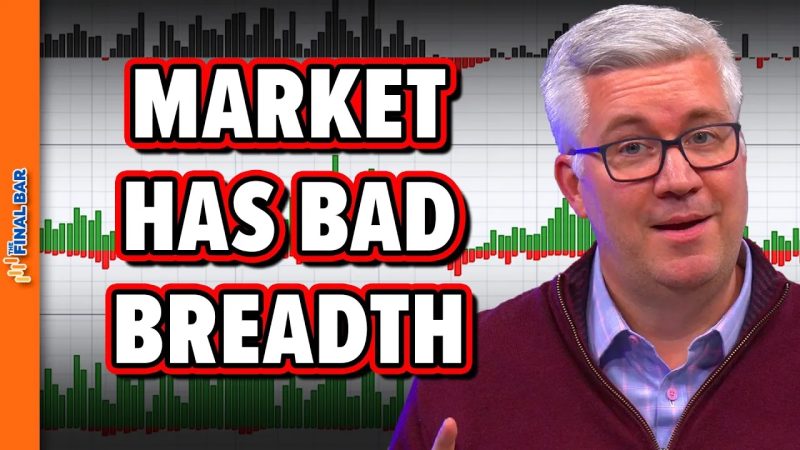Market breadth has long been a crucial indicator for investors to gauge the overall health of the stock market. As the adage goes, the market climbs a wall of worry, but what happens when the breadth of the market starts to narrow? In recent times, there has been much debate over whether poor market breadth should be a cause for concern among investors.
Diving into the concept of market breadth, it essentially refers to the number of individual securities that are participating in a market upswing or downturn. In a healthy market, a broad array of stocks should be experiencing positive momentum, indicating broad-based market strength. Conversely, poor market breadth occurs when only a limited number of stocks are driving market gains, often masking underlying weaknesses.
One of the primary reasons poor market breadth raises red flags is the potential for a correction or reversal. When market gains are being fueled by a narrow group of stocks, it suggests that the overall market rally may lack sustainability. This concentration of gains among select stocks can create a fragile market environment susceptible to swift downturns when sentiment shifts.
Furthermore, poor market breadth can also signal underlying issues in different sectors or industries. If only a handful of sectors are driving market gains while others stagnate or decline, it could highlight imbalances in the market. This lack of sector diversification leaves the market vulnerable to sudden shocks or disruptions that could trigger a broader market sell-off.
Investors should also pay attention to market breadth indicators such as advancing versus declining stocks, new highs versus new lows, and the participation of small-cap versus large-cap stocks. These metrics provide insights into the underlying dynamics of market movements and can help investors make informed decisions about portfolio allocations and risk management strategies.
While poor market breadth can be a cause for concern, it’s essential for investors to assess the overall market environment holistically. Market breadth indicators should be used in conjunction with other fundamental and technical analysis tools to get a comprehensive view of the market landscape. Additionally, understanding the drivers behind poor market breadth can help investors navigate uncertain market conditions and adjust their investment strategies accordingly.
In conclusion, poor market breadth can serve as a warning sign for investors, pointing to potential weaknesses and vulnerabilities in the market. By monitoring market breadth indicators and staying vigilant for signs of deteriorating breadth, investors can better position themselves to weather market volatility and capitalize on opportunities as they arise.
